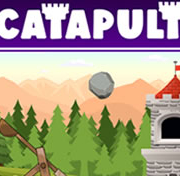Archipelago versus Island, Science Game for Kids
Learn the differences between an archipelago and island by playing this game.
Archipelago, Island
Let's start by looking at the geography of an island before we get into the topic of its origin and location. Geology and the origin of islands play a key role in their formation. The seafloors can be formed by volcanoes. Examples of such archipelagos include the Hawaiian Islands and Canary Islands as well as Azores, Aleutian Islands and Azores. Islands can also be created by sea level rise from high places.
Geography
The Greek words arkhi (or pelagos) and the Greek word archipelago are both derived from Greek. It also appears in Italian. The Aegean Sea was called an archipelago by the ancient Greeks. Archipelago is a term that was used historically to refer to large groups of volcanically-derived islands that were separated from other continents. Examples of archipelagos include Easter Island and the Hawaiian Islands.
Geology
The unique conical shape of the Hawaiian Islands is mountainous and was formed through continuous eruptions and layer upon layer. They rise from the ocean at an average elevation of just a few meters to almost 5000 feet. Twelve terrace levels are found on the Hawaiian islands. The islands are among the most beautiful volcanic areas in the world. Their fascinating geological history is fascinating.
Origin
The geology of Galapagos archipelago starts below the sea floor and rises to the ocean floor. Here are the three major tectonic plates. These islands are young. Isabela and Fernandina have less than one million years, while San Cristobal (and Espanola) are three to five million years respectively. The archipelago is a rare example of how an ocean island can evolve from a volcanic area in the west to an older non-volcanic island east.
Major islands
The Philippines is an archipelago in Southeast Asia that lies approximately halfway between Australia, Asia and the Philippines. It can be divided into three parts: the Sunda Shelf and the Sahul Shelf. The third is the area of recent, tectonic activity. Most of Indonesia's islands are located within 10 degrees of Equator. The average temperature is around 80 degrees Fahrenheit, or 21 degrees Celsius. Annual rainfall can vary greatly. Tourists from all over the world visit the Philippines to see the islands.
Conservation
Conservation of Archipelago and Islands is a program that preserves archipelago's fauna and flora. Key species in immediate or particular danger are of special interest to organizations. Research is currently focusing on filling information gaps regarding Mediterranean chameleons or Golden jackals. Many endangered species of archipelago fauna and island flora are protected under law. They are home to many endangered species.
Environmental impact
The world's archipelagos and island nations face many challenges. Problems can arise in human habitat, sanitation, land use, and even human habitat. Many of these houses are constructed below their carrying capacities and are situated in areas that are susceptible to flooding. These islands have seen an increase in urbanization, which has led to overcrowding and madeshift construction. This has caused health problems. Many islands have established tree replanting programs. However, urban pollution remains a problem.
Welcome young explorers! Are you ready to learn about the fascinating world of geography? Today, we will be playing a fun and exciting science game that will teach you about the differences between an archipelago and an island.
Many people use the terms archipelago and island interchangeably, but did you know that they are not the same thing? An archipelago is a group of islands that are located close together, while an island is a single landmass that is surrounded by water. In this game, you will learn to differentiate between these two terms and expand your knowledge of geography.
The game is designed to be engaging and interactive, with stunning visuals and simple instructions that will guide you through the different levels. You will be asked to identify which landmass is an archipelago or an island, and as you progress, the game will become more challenging. You will need to use your observation skills and knowledge of geography to identify the correct answer.
Playing this game will not only teach you about the differences between an archipelago and island, but it will also enhance your cognitive abilities, critical thinking skills, and memory retention. So, what are you waiting for? Let's dive into the world of geography and become a master explorer!










